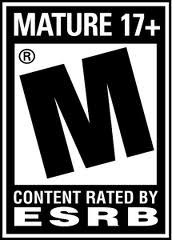This post has not been edited by the GamesBeat staff. Opinions by GamesBeat community writers do not necessarily reflect those of the staff.

In a landmark decision, the US Supreme Court recently struck down the controversial California law banning the sale of “violent” video games to minors. In a 7-2 decision, the law was deemed unconstitutional and an affront to our 1st amendment rights as citizens of the United States. The Court equates games to “books, plays, and movies that preceded them” and in perhaps the most telling quote from the decision says:
“Under our Constitution, aesthetic and moral judgments about art and literature are for the individual to make, not for the Government to decree, even with the mandate or approval of a majority.”
While the concept of this law might have appealed on a grand scale to people, the underlying motivation behind it was reprehensible. The gaming industry, much like the music and movie industry, is self-policed by an organization called the ESRB. This is the organization that slaps labels on games such as “E” for everyone and “M” for mature. These labels are equivalent to “PG” and “R” in movies. This self-policing allows parents to remain informed in deciding whether or not a specific game is suitable for their child. The key point here is that the individual is still allowed to decide for themselves. Society must walk the fine line between providing an educated choice and mandating with threat criminal punishment in order to preserve our rights as individuals.
It is true that many companies, such as game-selling powerhouse Gamestop, have adopted company policy that makes it against their rules for employees to sell “M” rated games to minors. Similarly, many movie theaters check for identification before selling a ticket to an “R” rated movie and many stores check before selling “Parental Advisory” music to youngsters. These company policies are self-policed within the company though, no government law forces them to do so.
So why is it so important to allow for self-policing instead of letting the government create a law to help provide support to companies that clearly are attempting to limit the sale of questionable materials to minors? The Supreme Court outlined this in their opinion today. Games, like the other forms of entertainment, are art. This art “communicates ideas – and even social messages – through many literary devices such as characters, dialogue, plot, and music.” And most importantly, the content of this art is OPEN TO INDIVIDUAL INTERPRETATION. The law in question that was shot down by the court simply banned the sales of “violent” games. What is a “violent” game? Who gets to decide this? Is it limited to simply games with lots of guns such as Grand Theft Auto? What about when the gunplay is only against aliens, not humans, such as in Halo? Or what if the gun does not hurt anything but instead can be used to solve puzzles like in Portal? How about in Mario games, where Mario viciously stomps on poor Goombas and shoots balls of fire at his enemies?
Yes the ESRB exists to place labels on games to define this content, but as already discussed, the ESRB is a self-policed organization. If it becomes corrupt or the industry decides it is misleading in its labels, it can be disbanded and replaced. Once it becomes lawfully enforced however, this becomes much harder. So should the government create an organization such as the FDA to make these decisions for us similarly to deciding when we shouldn’t eat bean sprouts because of salmonella scare? Absolutely not. Art cannot directly harm you. While art can influence people to action, it never actively will make you sick or cause you to die.
The government has no business directly mandating what art companies can sell anyone. Self-regulation is a cornerstone of our economic and social society and the Supreme Court should be applauded for not succumbing to fears of violent video games.
